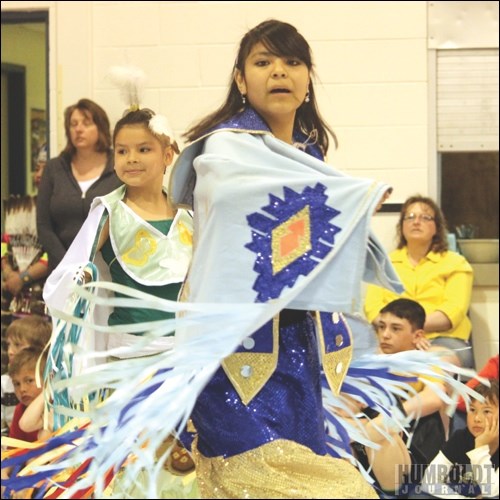St. Augustine School may be in Humboldt, but for one day it became home to the world.
On May 9 the school hosted its first ever Folk Fest, designed to teach students, teachers and others about cultures from all over the world.
Each class created their own display based on the particular country they studied, which included the Philippines, Germany and South Korea. Classrooms were ringed by cardboard displays that covered a country's history, language, culture and many other areas. Students were given their own "passports" and had them stamped at the different pavilions they visited. Entertainment during the day included First Nation dancers, who received a warm reception in the gymnasium.
The day turned the school into a dizzying cultural mosaic. Girls floated down the halls in Japanese kimonos, brilliant in every colour of the rainbow and many more. The smell of food wafting from every open door made the place feel more like an open-air market than an elementary school. Boys were swallowed up by inflatable sumo wrestling suits, their tiny heads barely visible above the oversized shoulders.
The event was the brainchild of principal Carol McLaren, who was inspired by the similarly named Folk Fest in Saskatoon. A tremendous amount of work by students and teachers alike made the day possible. McLaren said the goal was to make students aware that a place like Mexico is more than just a name on a map.
"We want the kids to have respect for other cultures," she said with a laugh. "I've learned as much as anyone today."
One of the people she would have learned from was Hannah Keller. The eight-year-old's class devoted their pavilion to the Philippines. She stood in front of a board titled "Language and education". She pointed to a piece of paper with two columns; one listed common English phrases, the other the Filipino equivalents.
"This is how you say OK," she said. "And this is how you say hello."
On the other side of the display were photos of Filipino schools. One was a stately place, worthy of any high school in Canada. The other showed students sitting in desks on a mud floor.
"This is a school where they have a lot of money," Hannah said about the first picture. She paused a moment before describing the second. "This one isn't," she said.
Down the hallway and tucked away in a corner was a room dedicated to South Korea. Davin Thibodeau and his friend Jacob Lessmeister gave a complete tour of the room. They made sure to emphasize the great sizes insects can reach in South Korea and pointed out the kites they had made, each featuring a dragon.
The facts kept coming - "It rains so hard you can even get soaked with an umbrella," Lessmeister said - until a complete tour of the room was done.
In the middle of the classroom students were being offered kimchi, the iconic Korean vegetable dish. Some found it too spicy, while others took an immediate liking to it.
Whether they liked it or not, they all got the chance to try something new. That was the point, after all.




